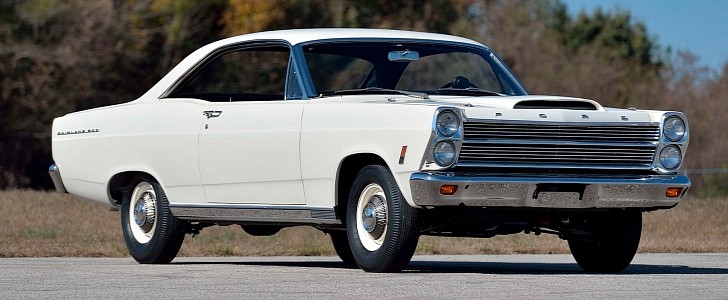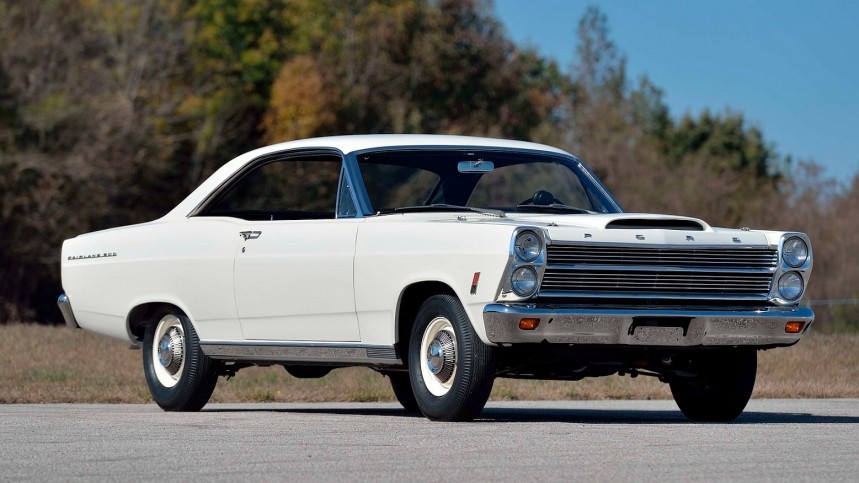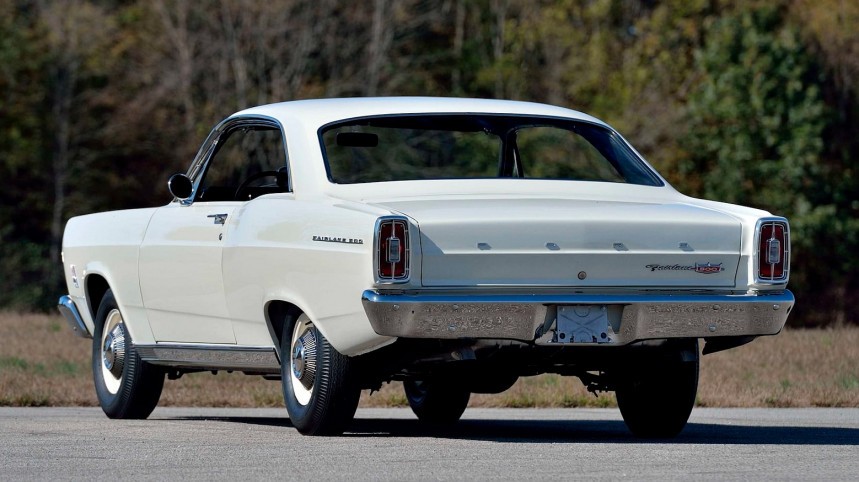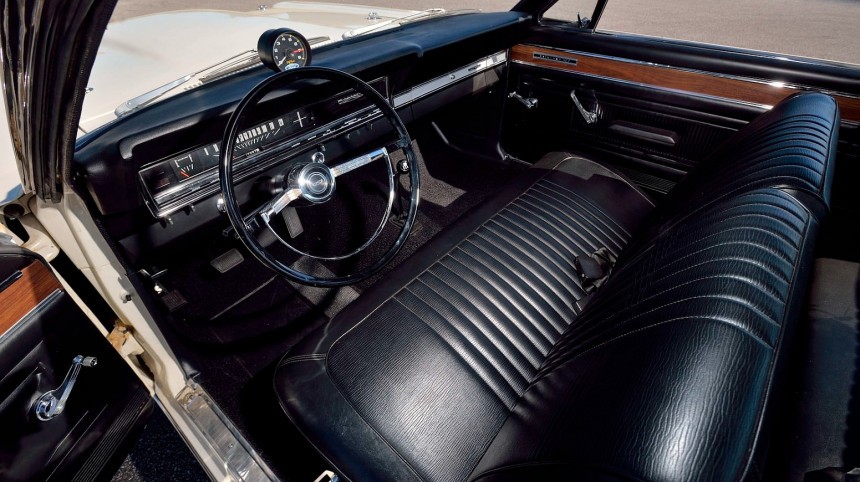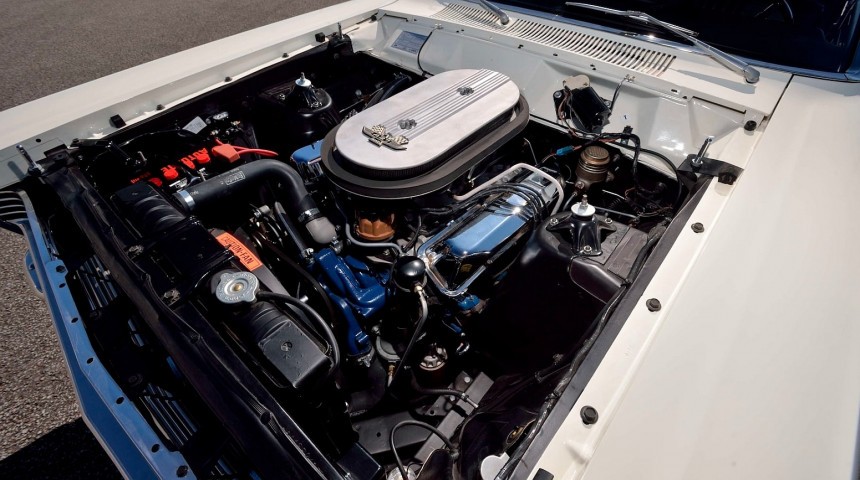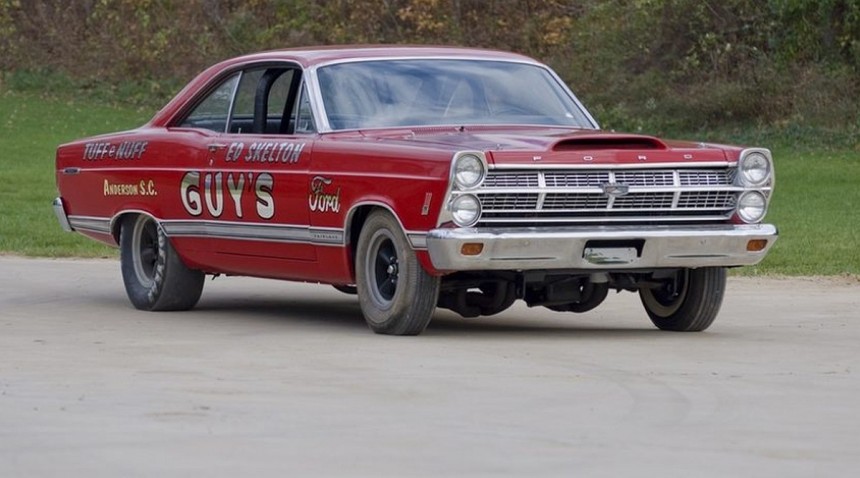Like many Ford nameplates that emerged in the 1950s, the Fairlane joined the muscle car wars in the 1960s. It's mostly famous for having spawned the Thunderbolt Super Stock monster in 1964, but Ford developed another drag racer in 1966. Meet the Fairlane R-Code, which is even rarer than the Thunderbolt.
Stock car drag racing got all heated up in the early 1960s when all Detroit-based automakers began dropping their largest-displacement V8 engines in full-size cars. However, GM, Ford, and Chrysler soon realized that using big engines in intermediate vehicles makes more sense due to their weight advantage.
Ford was racing the full-size Galaxie at the time but soon turned its attention to the Fairlane, which had been downsized to an intermediate in 1962. The midsize eventually spawned the Thunderbolt, a lightweight racer for the Super Stock class.
Fitted with the NASCAR-spec, 427-cubic-inch (7.0-liter) V8, the Thunderbolt debuted with a win at the Winternationals and then took home both the NHRA Top Stock crown and the NHRA Manufacturers' Cup.
The Thunderbolt was short-lived, with only 100 units built in 1964. All were completed by the Dearborn Steel Tubing company since the 427 V8 didn't fit under the Fairlane's hood without major modifications.
The R-Code arrived two years later, just as Ford redesigned the Fairlane for the fifth generation. Although it wasn't bigger than its predecessor, the Fairlane now had a bit more room under the hood, enough to fit the 390-cubic-inch (6.4-liter) Thunderbird V8 for standard production.
With both Mopar and GM delivering hot and fast midsize racers, FoMoCo needed a successor to the Thunderbolt. But while the competition was offering stripped-down, race-only vehicles with thin-gauge alloy panels, Lexan windows, and "swiss-cheese" frames, Ford went with a simpler approach that kept the car road-legal.
Unlike the Thunderbolt, which showcased a unique exterior, the R-Code looked like a run-of-the-mill Fairlane. Sure, the hood scoop was a hint that the V8 between the front wheels was far from regular, but everything else looked stock.
The fact that Ford chose to paint all R-Code cars Wimbledon White and fit them with steel wheels further enforced the plain-jane look.
The unassuming theme continued inside the cabin, where the R-Code featured a bench front seat instead of separate lightweight units. What's more, the doors had actual glass windows in them.
But this Fairlane wasn't your grandpa's daily driver in terms of output. Fitted with the same FE-series 427 V8 engine as the Thunderbolt, the R-Code had a long list of race-spec upgrades under the hood.
Highlights included an aluminum mid-rise intake, dual Holley 570 CFM four-barrel carburetors, and cast exhaust manifolds. Everything else was either forged steel or forged aluminum.
And just like the Thunderbolt, the R-Code was officially rated at 425 horsepower and 480 pound-feet (651 Nm) of torque, which was only 10 pound-feet (14 Nm) short of the mighty 426-cubic-inch (7.0-liter) Hemi V8 that Dodge and Plymouth offered at the time.
And like its rival offering, the 427 was underrated, with actual output coming in at around 500 horsepower.
All that oomph traveled to the rear wheels through a Toploader 4-speed manual transmission and a Positraction differential with 3.89:1 gears.
An authentic sleeper that was still road-legal, the Fairlane R-Code was quite expensive at the time. The package cost as much as the standard Fairlane, putting the R-Code at a very expensive $4,502 in 1966. For reference, that was about 33% more than a Hemi-equipped Dodge Charger.
Needless to say, the R-Code wasn't very popular and Ford sold only 57 of them. But that was enough to homologate the car for the NHRA, which required at least 50 units to be produced.
Not all cars made it on the drag strip, but those that did scored impressive results by running the quarter-mile in the low 11s. One such car was campaigned by veteran Ford drag racer Ed Skelton.
Born during Ford's "Total Performance" marketing campaign, the Fairlane R-Code is overshadowed by the Shelby-tuned Mustangs and the GT40 Le Mans racers of the era.
It doesn't get as much publicity as the Thunderbolt, but it's a highly sought-after performance car among Ford enthusiasts.
Many of these cars had their engines blown and replaced in the early days, so only a few all-original cars are known to exist. They rarely show up at auction events, but when they do, they change hands for more than $200,000.
As a big fan of the fifth-generation Fairlane, the 1966 R-Code ranks high in my book. And I'd take one over a Thunderbolt any day of the week since it's more suitable for road use. What's your favorite high-performance Ford from the 1960s?
Ford was racing the full-size Galaxie at the time but soon turned its attention to the Fairlane, which had been downsized to an intermediate in 1962. The midsize eventually spawned the Thunderbolt, a lightweight racer for the Super Stock class.
Fitted with the NASCAR-spec, 427-cubic-inch (7.0-liter) V8, the Thunderbolt debuted with a win at the Winternationals and then took home both the NHRA Top Stock crown and the NHRA Manufacturers' Cup.
The R-Code arrived two years later, just as Ford redesigned the Fairlane for the fifth generation. Although it wasn't bigger than its predecessor, the Fairlane now had a bit more room under the hood, enough to fit the 390-cubic-inch (6.4-liter) Thunderbird V8 for standard production.
With both Mopar and GM delivering hot and fast midsize racers, FoMoCo needed a successor to the Thunderbolt. But while the competition was offering stripped-down, race-only vehicles with thin-gauge alloy panels, Lexan windows, and "swiss-cheese" frames, Ford went with a simpler approach that kept the car road-legal.
Unlike the Thunderbolt, which showcased a unique exterior, the R-Code looked like a run-of-the-mill Fairlane. Sure, the hood scoop was a hint that the V8 between the front wheels was far from regular, but everything else looked stock.
The unassuming theme continued inside the cabin, where the R-Code featured a bench front seat instead of separate lightweight units. What's more, the doors had actual glass windows in them.
But this Fairlane wasn't your grandpa's daily driver in terms of output. Fitted with the same FE-series 427 V8 engine as the Thunderbolt, the R-Code had a long list of race-spec upgrades under the hood.
Highlights included an aluminum mid-rise intake, dual Holley 570 CFM four-barrel carburetors, and cast exhaust manifolds. Everything else was either forged steel or forged aluminum.
And like its rival offering, the 427 was underrated, with actual output coming in at around 500 horsepower.
All that oomph traveled to the rear wheels through a Toploader 4-speed manual transmission and a Positraction differential with 3.89:1 gears.
An authentic sleeper that was still road-legal, the Fairlane R-Code was quite expensive at the time. The package cost as much as the standard Fairlane, putting the R-Code at a very expensive $4,502 in 1966. For reference, that was about 33% more than a Hemi-equipped Dodge Charger.
Not all cars made it on the drag strip, but those that did scored impressive results by running the quarter-mile in the low 11s. One such car was campaigned by veteran Ford drag racer Ed Skelton.
Born during Ford's "Total Performance" marketing campaign, the Fairlane R-Code is overshadowed by the Shelby-tuned Mustangs and the GT40 Le Mans racers of the era.
It doesn't get as much publicity as the Thunderbolt, but it's a highly sought-after performance car among Ford enthusiasts.
As a big fan of the fifth-generation Fairlane, the 1966 R-Code ranks high in my book. And I'd take one over a Thunderbolt any day of the week since it's more suitable for road use. What's your favorite high-performance Ford from the 1960s?
